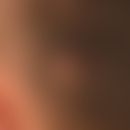DefinitionThis section has been translated automatically.
About 1/3 of severe pigment reactions are suspected to be allergic in nature. They can occur with a delay of years. Allergic reactions to other components of tattoo inks also occur, usually within days or weeks. The specific ingredients of tattoo inks cannot usually be identified by allergologists. Declarations are unreliable (see also Tattoos, side effects).
General informationThis section has been translated automatically.
4.6% of tattooed people report non-infectious tattoo intolerance reactions. These include:
- Contact eczema
- Lichenoid reactions
- hyperkeratosis
- ulcers
- granulomas
- Tattoo sarcoidosis
- Pseudolymphomas
Tattooed persons are exposed intracutaneously to various contact allergens. The diagnostic value of corresponding epicutaneous tests for the diagnosis of "tattoo allergy" has yet to be established (Schubert S et al. 2021). The recommendations of the IVDK (Information Association of Dermatology Clinics) include four established DKG test series (DKG = German Contact Allergy Group) for the clinical suspicion of a tattoo allergy:
- Standard series
- Leather and textile dyes
- Industrial biocides
- Preservatives in topicals
LiteratureThis section has been translated automatically.
- https://dkg.ivdk.org/testseries.html
TablesThis section has been translated automatically.
DKG tattooing agent
1 Iron (III) chloride 2%/Aqu.
2 Copper (II) sulfate, 5*H2O 1%/ Aqu.
3 Aluminum chloride 10%/ Vas.
4 p-Phenylenediamine (free base) (CI 76060) 1%/Vas.
5 Naphthol AS (CI 37505) 1%/Vas.
6 Dispers Orange 3 (CI 11005)1%/Vas.
7 Dispers Yellow 3 (CI 11855)1%/Vas.
8 Bismark Brown R 0,5%/Vas.
9 Abietic acid 10 %/Vas.
10 Ethyl acrylate 0.1%/vat.
11 Methyl methacrylate 2%/Vas.
12 Butyl acrylate 0.1%/vas.
13 Polyethylene glycol 400 pure
14 Shellac 20%/alk.
15 Triethanolamine (TEA) (Trolamine) 2.5%/vat.
16 Sodium benzoate 5/%/vat.
17 Glyoxal trimer (dihydrate) 1%/Vas.
18 Diethanolamine (DEA)2%/Vas.
19 Cocamidopropyl betaine 1%/aqu.
20 2-Phenoxyethanol 1%/Vas.
21 Octylisothiazolinone 0.025%/Vas.
22 Paraben mix 16 %/Vas.
23 Benzyl alcohol 1%/Vas.
24 Sorbic acid 2%/Vas.
25 Chlorhexidine gluconate 0.5%/aqu.
26 Sodium disulfite 1%/Vas.
27 Propylene glycol 20%/Aqu.
28 Tetracaine HCl (amethocaine)1/%/Vas.
29 Lidocaine 15%/Vas.
30 Benzocaine (ethyl aminobenzoate) 5%/Vas/Aqu.
DKG Leather and textile dyes
1 Dispers Orange 3 (CI 11005)1%/Vas.
2 Dispers Yellow 3 (CI 11855) 1%/Vas.
3 Dispers Red 1 (CI 11110) 1%/Vas.
4 Dispers Red 17 (CI 11210) 1%/Vas.
5 p-Phenylenediamine (free base) (CI 76060) 1%/Vas.
6 Bismark Brown R 0.5%/Vas.
7 Disperse Blue 106 1%/Vas.
8 Disperse Blue 124 1%/Vas.leather
DKG Industrial biocides
1 7-Ethylbicyclooxazolidine (Bioban CS 1246) 1%/Vas.
2 Octylisothiazolinone 0.025%/vat.
3 Sodium-2-pyridinethiol-1-oxide (Sodium Omadine) 0.1%/aqu.
4 1,2-benzisothiazolin-3-one, sodium salt 0.1%/vas.
5 Chlorxylenol 1%/Vas.
6 Chlorcresol 1%/Vas.
7 Bronopol (2-bromo-2-nitropropane-1,3-diol) 0.5%/vat.
8 Polyaminopropyl biguanide 2.5%/Aqu.
DKG Preservative, e.g. in topicals
1 Chloroacetamide 0.2%/vas.
2 Diazolidinyl urea (Germall II) 2%/vas.
3 Quaternium 15 (1-(3-chloroallyl)-3,5,7-.1 %/vas.
4 Imidazolidinyl urea (Germall 115) 2%/vas.
5 DMDM Hydantoin 2%/Aqu.
6 Sorbic acid 2%/vas.
7 Triclosan 2%/Vas.
8 Benzyl alcohol1%/Vas.
9 Chlorhexidine digluconate 0.5%/Aqu.
10 Sodium benzoate 5%/Vas.
11 Bronopol (2-bromo-2-nitropropane-1,3-diol) 0.5%/vat.
12 Sodium disulfite 1%/Vas.
13 Paraben mix 16%/Vas.
14 Dibromodicyanobutane (methyldibromo glut.)0.2%/vat.
15 Polyaminopropyl biguanide 2.5%/Aqu.



